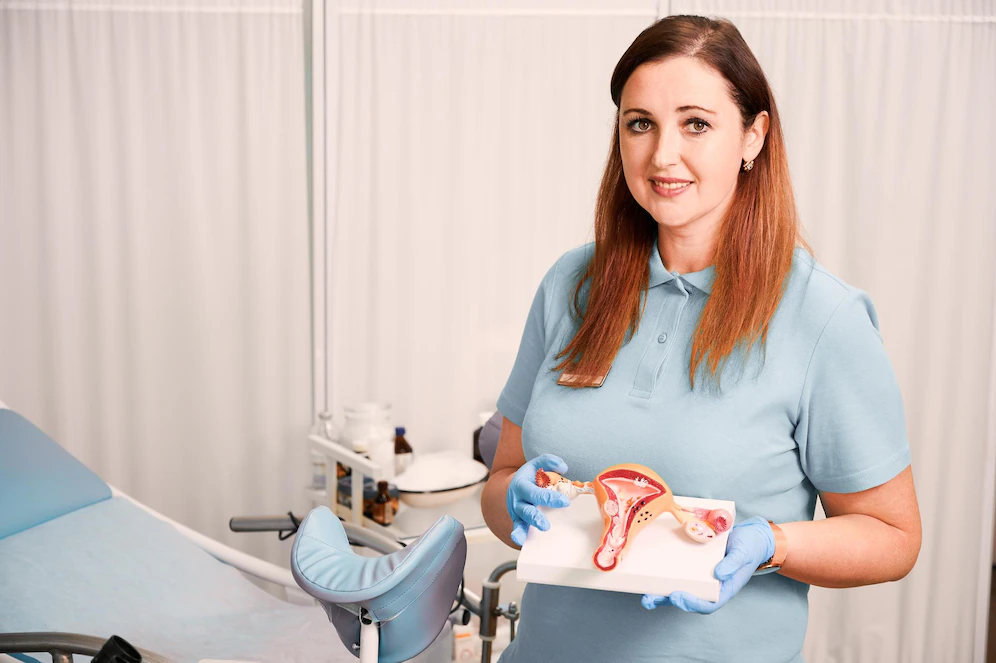Symptoms
Possible signs and symptoms may include:
Pain : A dull, aching pain or discomfort is more likely when standing or late in the day. Lying down often relieves pain.
A mass in the scrotum : If a varicocele is large enough, a mass like a "bag of worms" may be visible above the testicle. A smaller varicocele may be too small to see but noticeable by touch.
Differently sized testicles : The affected testicle may be noticeably smaller than the other testicle.
Infertility :A varicocele may lead to difficulty fathering a child, but not all varicoceles cause infertility.
When to see a doctor
Annual wellness visits for boys are important for monitoring the development and health of testicles. It's important to schedule and keep these appointments.
A number of conditions could contribute to pain, swelling or a mass in the scrotum. If you experience any of these, see your health care provider to get a timely and accurate diagnosis.
Diagnosis
Your health care provider can diagnose a varicocele by visual inspection of the scrotum and by touch. You'll likely be examined while lying down and standing up.
When you're standing, your health care provider may ask you to take a deep breath, hold it and bear down, similar to the pressure during a bowel movement. This technique (Valsalva maneuver) can make a varicocele easier to examine.
Imaging test
Your health care provider may want you to have an ultrasound exam. Ultrasound uses high-frequency sound waves to create images of structures inside your body. These images may be used to:
Confirm the diagnosis or characterize the varicocele
Eliminate another condition as a possible cause of signs or symptoms
Detect a lesion or other factor obstructing blood flow
Treatment
A varicocele often doesn't need to be treated. For a man experiencing infertility, surgery to correct the varicocele may be a part of the fertility treatment plan.
For teenagers or young adults — generally those not seeking fertility treatment — a health care provider may suggest annual checkups to monitor any changes. Surgery might be recommended in the following situations:
A testicle that shows delayed development
Low sperm count or other sperm irregularities (usually only tested in adults)
Chronic pain not managed by pain medication
Surgery
The purpose of surgery is to seal off the affected vein to redirect the blood flow into healthy veins. This is possible because two other artery-and-vein systems supply blood circulation to and from the scrotum.
Treatment outcomes may include the following :
The affected testicle eventually may return to its expected size. In the case of a teenager, the testicle may "catch up" in development.
Sperm counts may improve, and sperm irregularities may be corrected.
Surgery may improve fertility or improve semen quality for in vitro fertilization.
Risks of surgery
Varicocele repair presents relatively few risks, which might include :
Buildup of fluid around the testicles (hydrocele)
Recurrence of varicoceles
Infection
Damage to an artery
Chronic testicular pain
Collection of blood around the testicle (hematoma)
The balance between the benefits and risks of surgery shifts if the treatment is only for pain management. While varicoceles may cause pain, most do not. A person with a varicocele may have testicular pain, but the pain may be caused by something else — an unknown or not yet identified cause. When varicocele surgery is done primarily to treat pain, there is a risk that the pain may worsen, or the nature of the pain may change.
Surgical procedures
Your surgeon can stop the flow of blood through the testicular vein by stitching or clipping the vein shut (ligation). Two approaches are commonly used today. Both require general anesthesia and are outpatient procedures that usually allow you to go home the same day. The procedures include:
Microscopic varicocelectomy : The surgeon makes a tiny incision low in the groin. Using a powerful microscope, the surgeon identifies and ligates several small veins. The procedure usually lasts 2 to 3 hours.
Laparoscopic varicocelectomy : The surgeon performs the procedure using a video camera and surgical tools attached to tubes that pass through a few very small incisions in the lower abdomen. Because the network of veins are less complex above the groin, there are fewer veins to ligate. The procedure usually last 30 to 40 minutes.
Recovery
Pain from this surgery generally is mild but might continue for several days or weeks. Your doctor might prescribe pain medication for a limited period after surgery. After that, your doctor might advise you to take nonprescription pain medicine, such as acetaminophen (Tylenol, others) or ibuprofen (Advil, Motrin IB, others) to relieve discomfort.
You'll likely be able to return to work about a week after surgery and resume exercise about two weeks after surgery. Ask your surgeon about when you can safely return to daily activities or when you can have sex.



